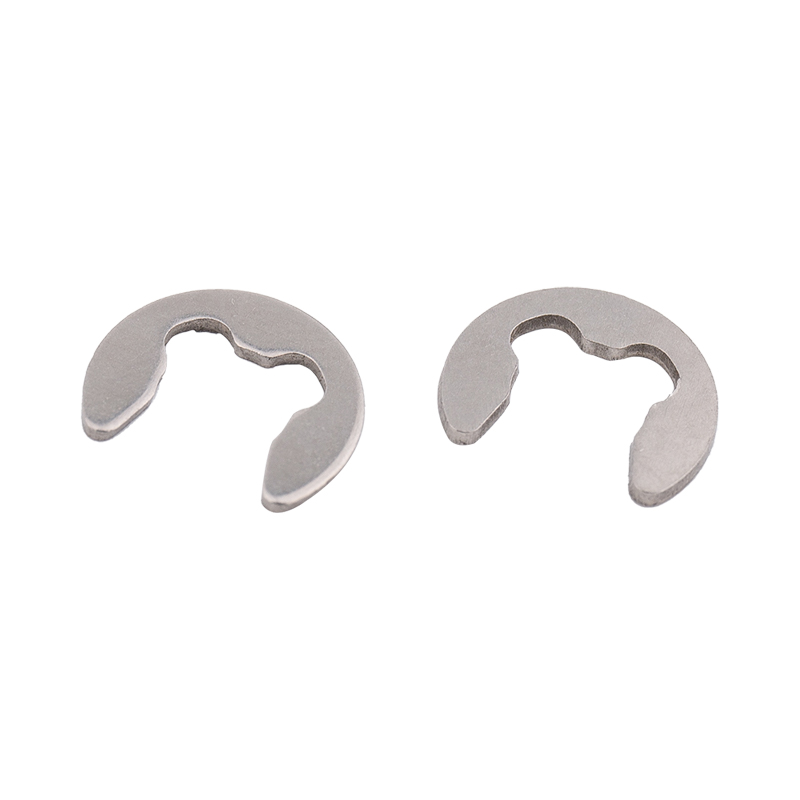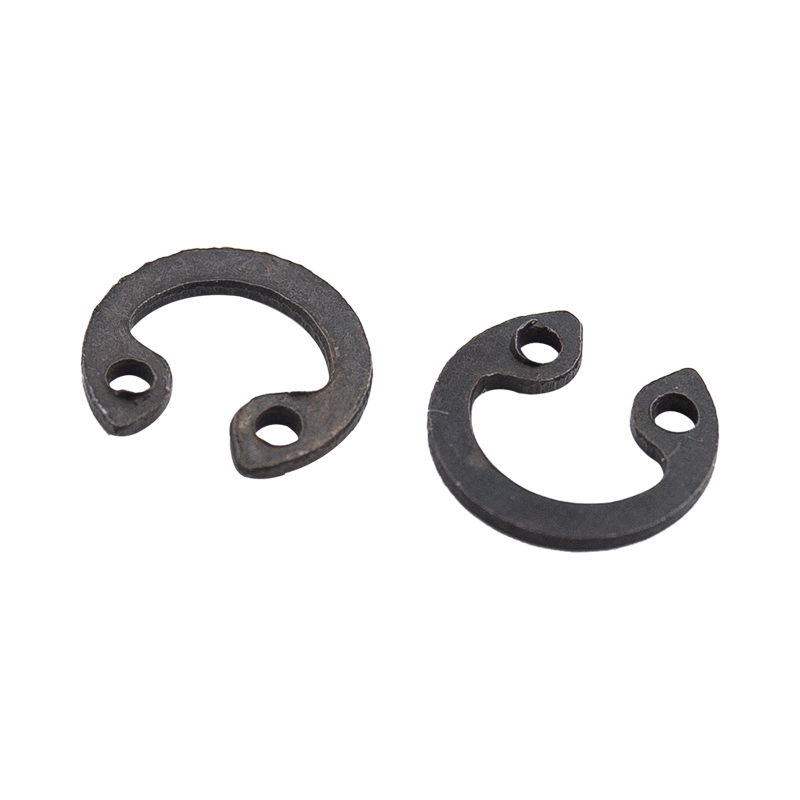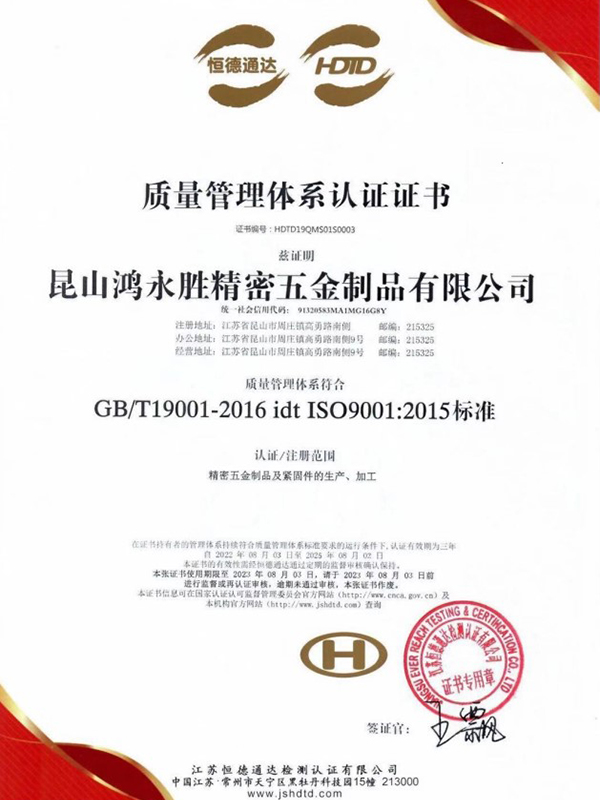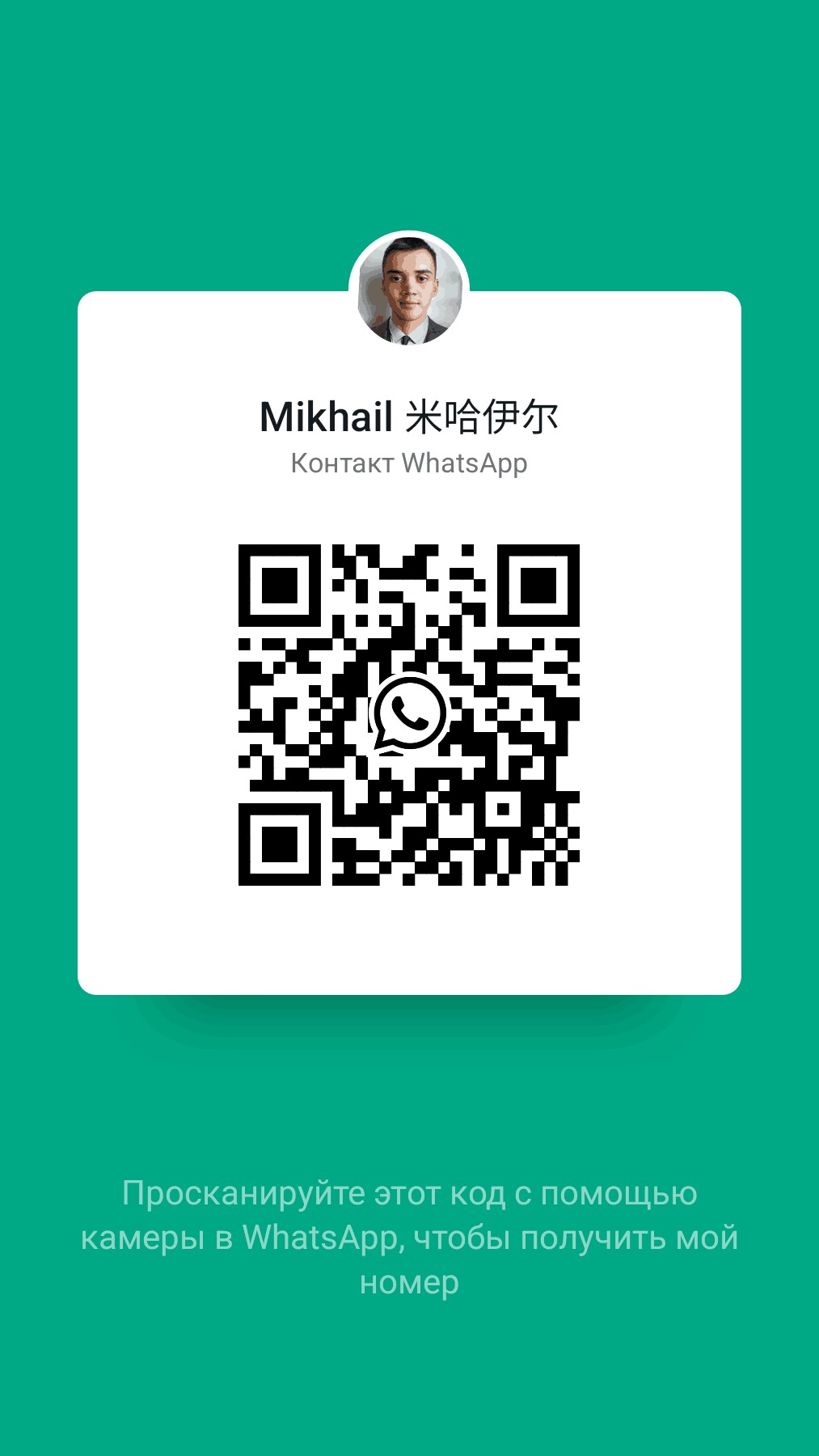Carbon Steel Bolt Supplier Guide: What Buyers Should Look For Selecting the right supplier for carbon steel bolts affects product performance, safety, and long-term cost. This guide breaks down the p...
READ MOREThe company has obtained two quality system management certificates of ISO9001:2015 and IATF16949:2016.
At present, the company has been for Japan, Sweden, the United States, Singapore, Malaysia, Hong Kong and the Pearl River Delta and many other customers to provide services, now the main customers are: Japan Sharp (SHARP), Japan SMC, Japan Panasonic (Panasonic), the Swedish automobile VOVOL, etc., all the fixed assets investment of more than 30 million dollars, welcome friends from all walks of life to the factory to visit, study, consulting and come! We welcome friends from all walks of life to visit our factory, investigate, consult and come to us for sample processing.
We are looking forward to establishing a good business partnership with you with mutual trust and reciprocity!
-
-
Introduction: The Foundation of Mechanical Systems In the intricate world of modern manufacturing and engineering, machined parts form the fundamental building blocks of virtually every mechanical sys...
READ MORE -
Why Structural Integrity Matters In construction, machinery, and other industrial applications, structural integrity is crucial for safety, performance, and longevity. One of the key elements in ensur...
READ MORE -
Introduction to Stainless Steel Fasteners Stainless steel fasteners are widely used in construction, machinery, and industrial applications due to their corrosion resistance and durability. Among them...
READ MORE
What are the applications and advantages of elastic retaining ring?
In the vast field of engineering, there are numerous components that play a crucial role in ensuring the stability and functionality of various mechanical systems. And among these components, the elastic retaining ring stands out as a true game-changer.
Elastic retaining rings, also known as snap rings or circlips, are small but powerful devices that are used to securely hold components in place within a shaft or a bore. Their unique design allows for easy installation and removal, making them a popular choice for a wide range of applications. From automotive engines to aerospace systems, these rings provide a simple yet effective solution for retaining components and preventing axial movement. Their versatility and reliability have made them indispensable in the engineering world.
One of the key advantages of using elastic retaining rings is their cost-effectiveness. Compared to other retention methods like threaded fasteners or adhesive bonding, elastic retaining rings are significantly more economical. The simplicity of their design and the ease of installation translate into reduced production costs and time savings. Additionally, their reusability makes them an environmentally friendly option, further adding to their appeal in today's sustainable engineering practices.
Beyond their cost-effectiveness, elastic retaining rings offer excellent performance in various demanding environments. These rings are available in different materials, including carbon steel, stainless steel, and beryllium copper, allowing engineers to select the most suitable option based on the application's requirements. Their ability to withstand high temperatures, corrosive substances, and extreme vibrations makes them ideal for applications in industries such as oil and gas, manufacturing, and automotive.
The elastic retaining ring has revolutionized the way engineers approach component retention. Its simplicity, cost-effectiveness, and exceptional performance have made it a top choice across various industries. Whether it's holding a bearing in an engine or securing critical components in a spacecraft, elastic retaining rings have proven their worth time and time again. As technology continues to advance, these rings will undoubtedly play an even more significant role in shaping the future of engineering.



 русский
русский Español
Español




